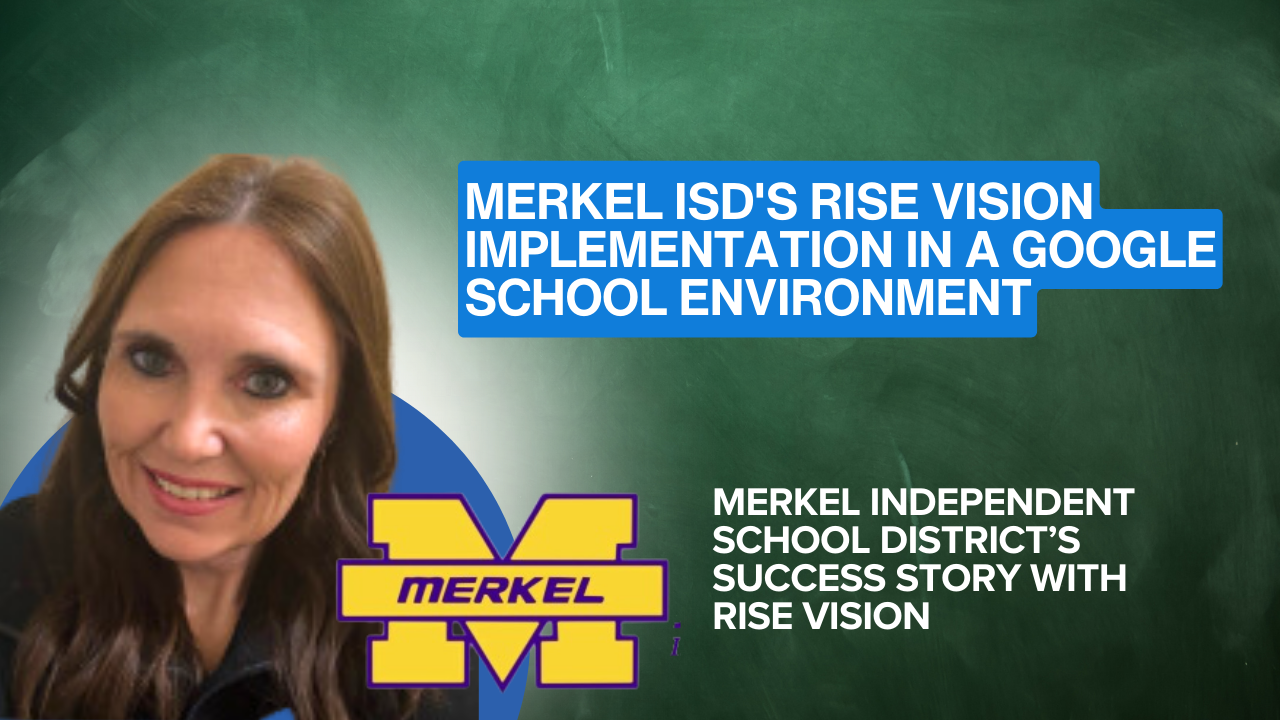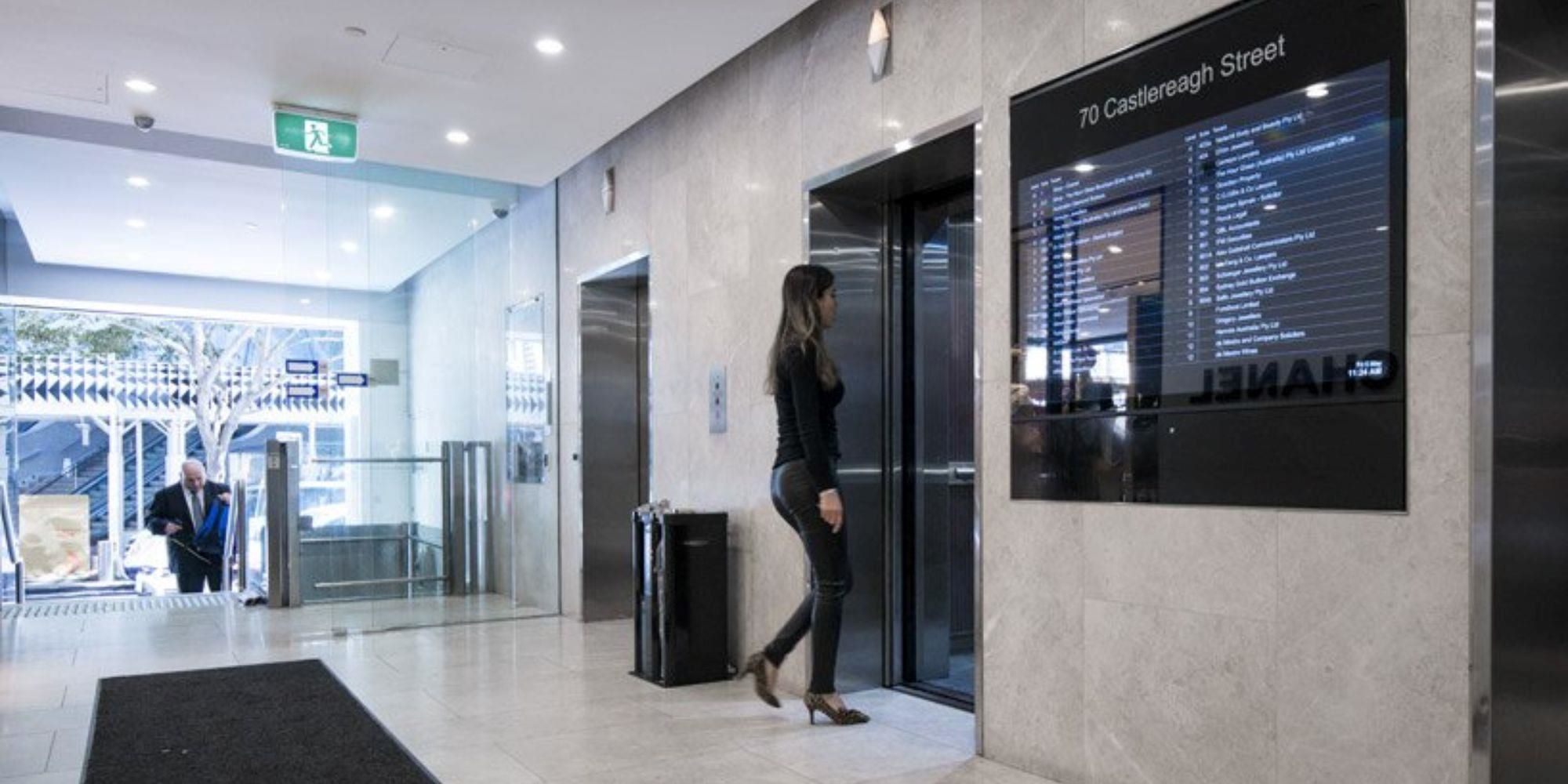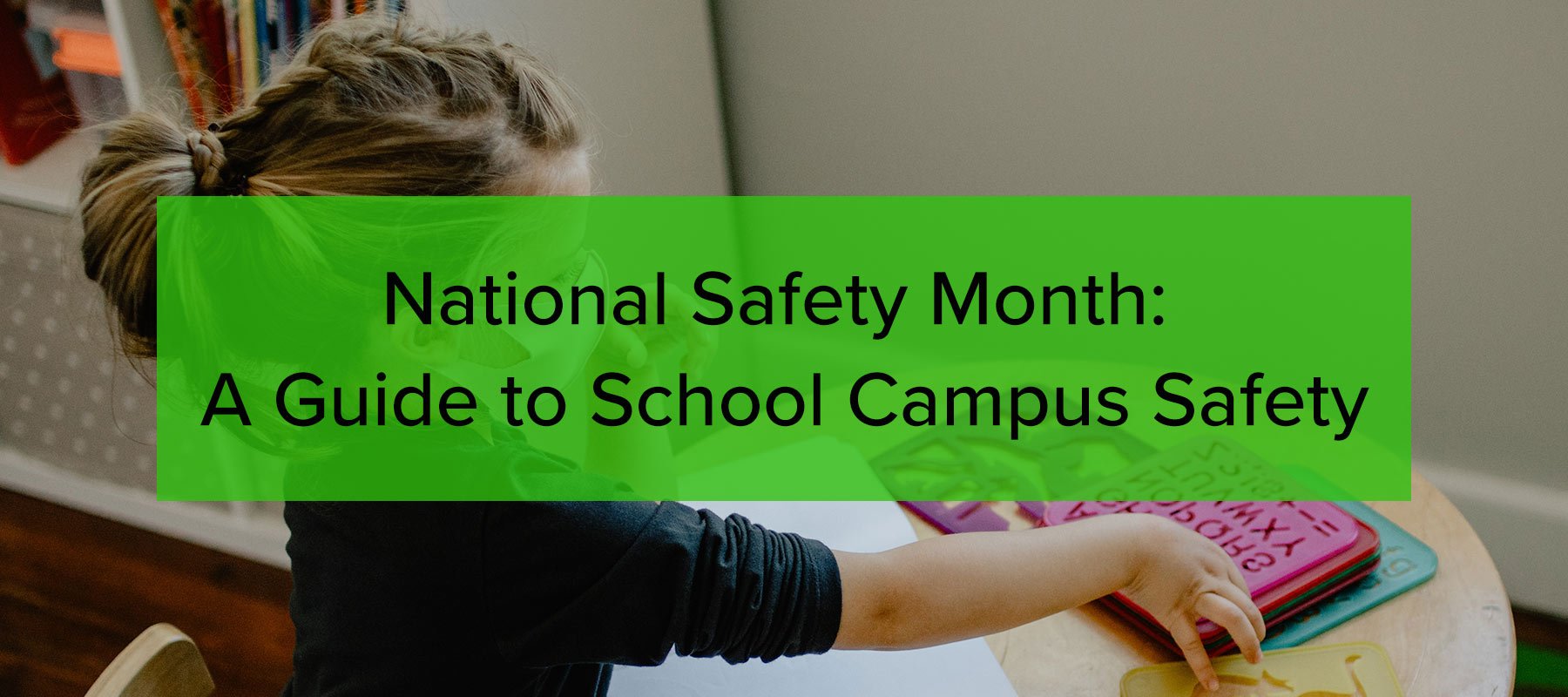
National Safety Month has been with us since 1996, when the National Safety Council (NSC) selected June as the right time to work on reducing the number of avoidable accidents Americans had on roads, at home and at work.
Though the major focus is the workplace, the NSC has expanded its remit to include the whole of American life, with its guiding philosophy being that 100 percent of accidents are preventable.
In this post, we’re going to use the NSC’s guidance for National Safety Month as a structure through which to view improving school campus safety.
The NSC gives each year a different focus, and sets out its National Safety Month as four weeks, each intended to draw attention to an under-noticed or timely aspect of safety in the broadest sense.
This year they are:
- Prevent Incidents Before They Start
- Address Ongoing COVID-19 Safety Concerns
- It’s Vital to Feel Safe on the Job
- Advance Your Safety Journey
We’ll pass on the NSC’s guidance, talk over how to approach these subjects in schools, and look at ways to implement these strategies in your school.
Week 1: Prevent Incidents Before They Start
The NSC says:
Identifying risks and taking proactive safety measures to reduce hazard exposure on important topics from ergonomics to chemical management is crucial to creating a safe workplace.
Outside the school gates
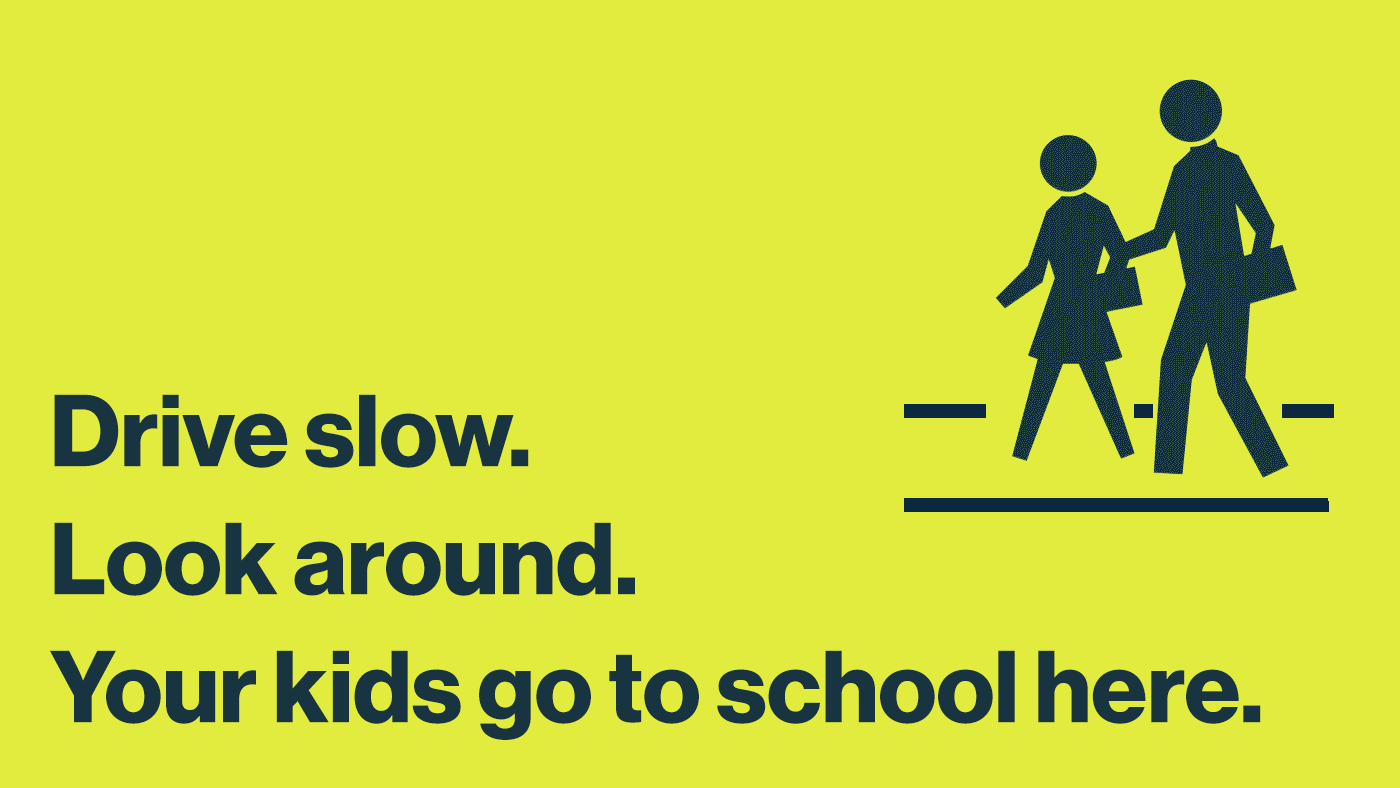
School safety starts outside the school gates. External static signage that reminds passing drivers they’re driving past a school can help reduce the number of near misses and accidents that take place outside school, but the majority of school traffic is parents and, in older cohorts, students themselves.
When parents are on a tight timeline or students are new to driving, the hectic traffic outside the school and in the parking lot can be a recipe for minor dings and accidents that can lead to injury.
On the way out of school, live digital signage can be used to reinforce safety messages; so can alerts pushed to students and parents at home.
Inside school: students
Some schools have students in as normal, others don’t. If you have students on campus, they are likely to lack activity-specific skills from correct lifting to, yes, handling chemicals. Safe item movement where relevant — shop class, for instance — is a great use for signage in relevant areas of the school as well as for in-class messaging within the syllabus.
Inside school: contractors and staff
Teaching students critical thinking and planning skills that will allow them to foresee and avoid potentially unsafe situations is a worthy goal, but the responsibility for seeing danger coming in the school lies ultimately with the staff.
Staff can be reminded about this through signage in classrooms, but it’s more likely to be effective if it’s in staff-only areas and sent to staff dashboards and phones. (Rise Vision has a solution for sending this information to websites and phones.)
Week 2: Address Ongoing COVID-19 Safety Concerns
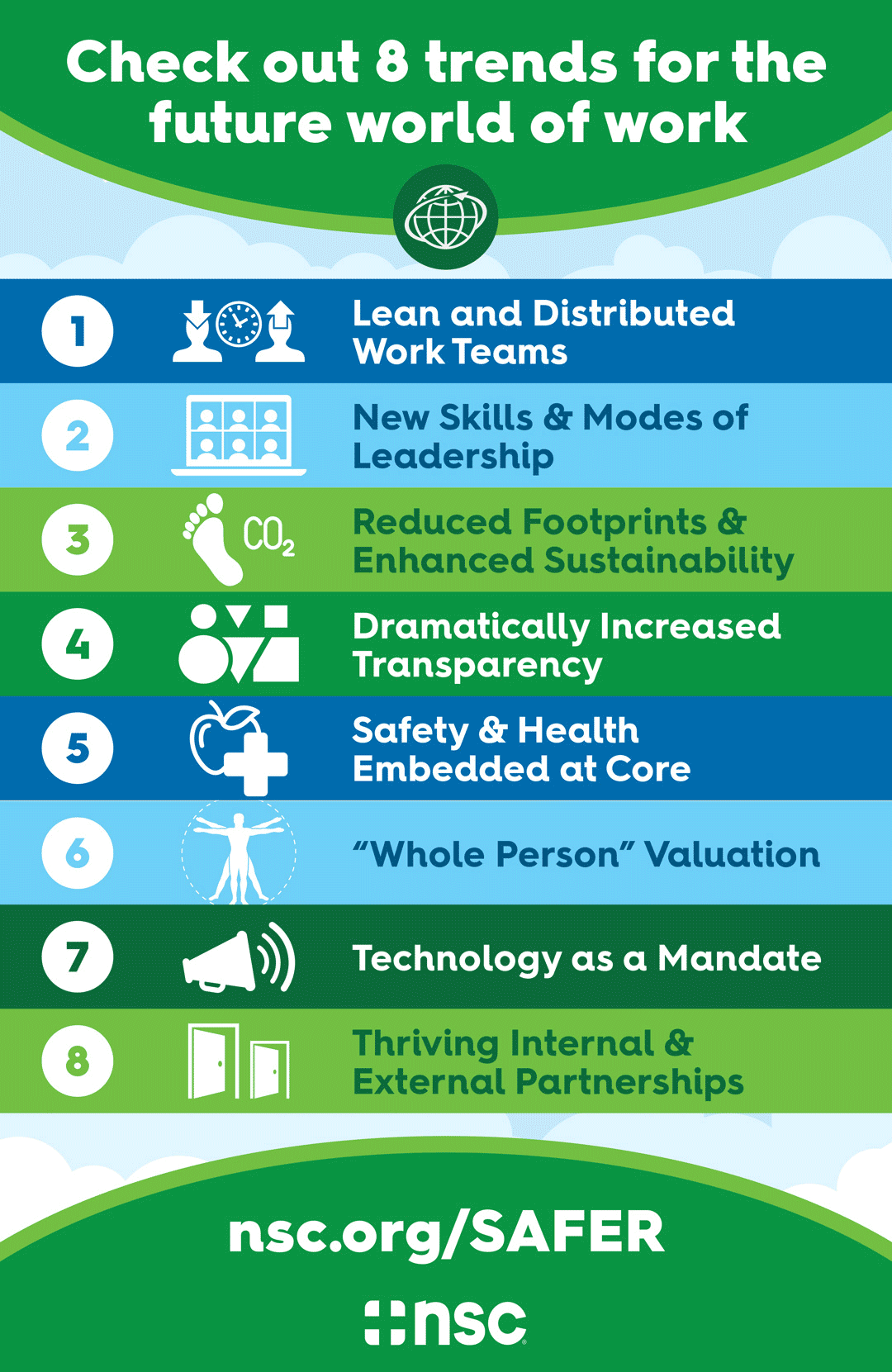
The NSC says:
As the pandemic continues, employers play an important role in the return to physical workspaces, building trust around vaccines, mental health and so much more.
The Coronavirus pandemic still isn’t over, and the regular school year is seriously bent out of shape as a result. Normally, kids and teachers would be gearing up for the long summer break; now, many schools around the country have been closed for months. Others have been open while schools in the next county are closed. Open and close orders at the state, county and city level make a confusing patchwork of school opening and closing. (For the current state of play on open and close orders, see this resource from CNN.)
However, schools are still workplaces. Even with no students, a skeleton of custodians and staff continues to use the school as a worksite, and many schools haven’t fully closed their out-of-hours provision, which can involve groups that have little to do with the formal education that takes place on campus during school hours.
That means workplace safety advice based on mitigating the spread of Covid-19 is still needed. We know that surface cleanliness, especially of high-traffic surfaces like door handles, is crucial. It’s best achieved by hand hygiene and basic surface cleaning.
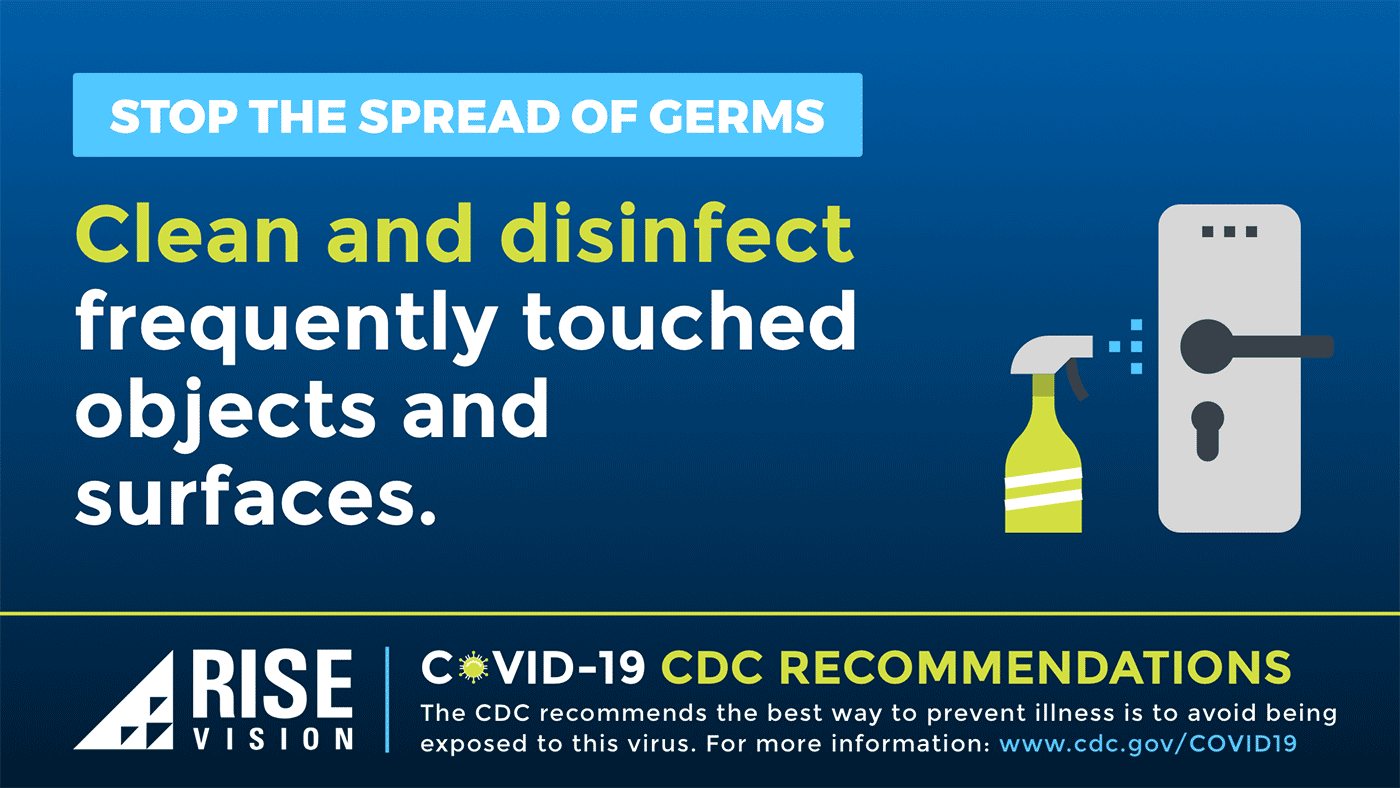
And we also know that Covid-19 is spread by droplets, aerosols, and is airborne in ventilation systems and enclosed spaces. This is best mitigated at the individual level by masking. So we want everyone — students, if you still have them, custodians, contractors, teachers and visitors — to wash and sanitize their hands, wear masks and stand six feet apart wherever possible.
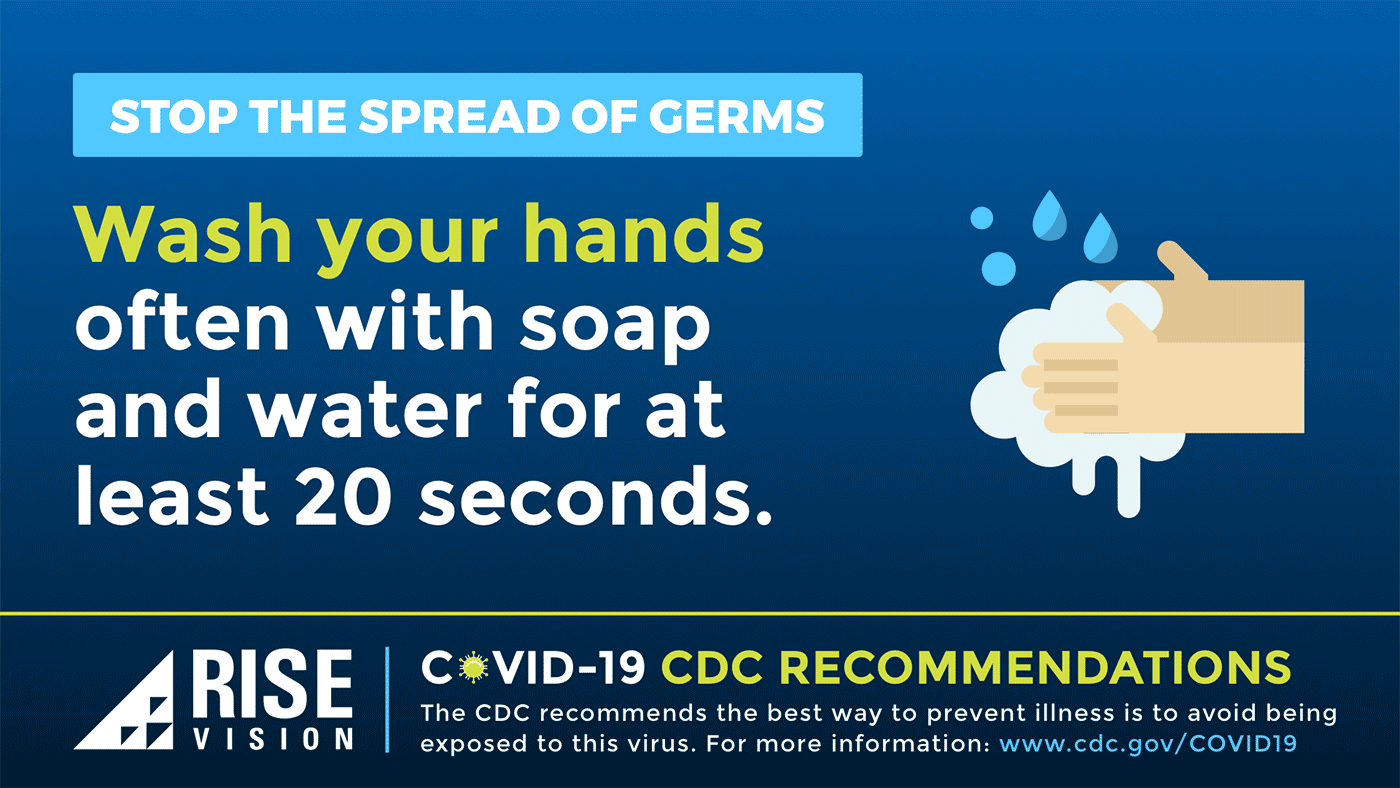
The evidence is that people comply with basic requirements like these when they’re either habitual, or constantly reminded of them. Hand hygiene compliance even in hospital settings is poor, so it’s important to emphasize it for students and staff in schools.
You need simple, clear signage that conveys the required behavior. It’s not a bad idea to emphasize the reasons periodically, using informative signage showing droplet spread or surface transmission. But it’s really the behaviors we want to lean in on.
Signage like this should be in crucial entry and passage areas — entries to buildings and to the school campus, doorways to individual classrooms. And it should be in bathrooms too.
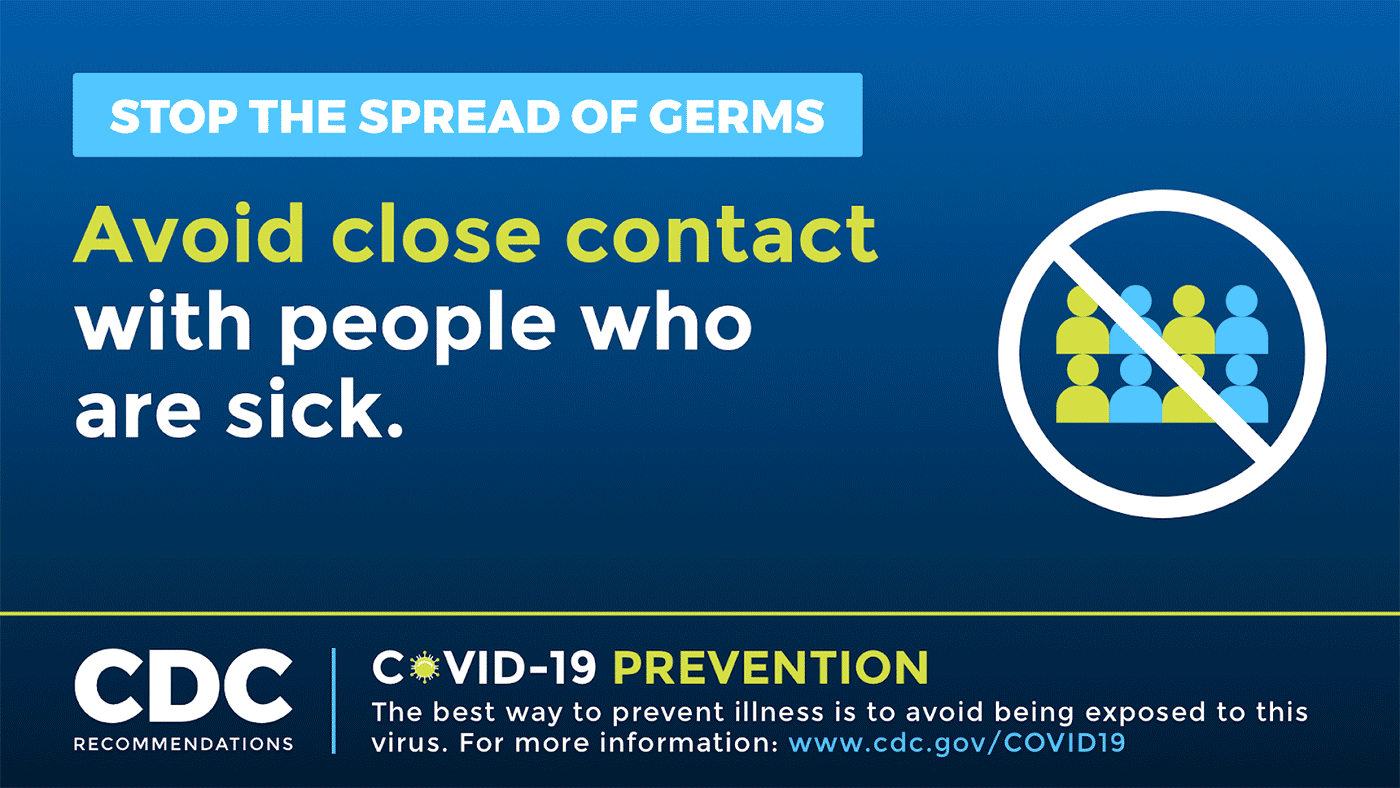
Vaccine trust is a vital area for defeating Covid-19, and schools should communicate their positive, science-backed position on Covid-19 vaccines to students, staff and parents in a way that supports good decisions without being unduly abrasive.
Whether individual schools can require vaccination is still an open question; experts say states probably won’t make school vaccinations mandatory, but school districts across the country are considering it and some absolutely will require student vaccination at K-12.
This should include an open discussion of the likely side effects, as well as an opportunity to do some myth-busting around the prevalence of more serious side effects and advocate for the hope that vaccination makes possible.
Finally, many schools don’t have students on campus. But responsibilities to students and their families don’t end at the school gates. This is an opportunity to communicate with students in their homes, and address some of the consequences of many months of social isolation. Students are stressed and anxious as never before, quite reasonably.
They also still need to be reminded of the best way to keep themselves and others safe while they’re out of school.
We have Coronavirus safety resources that can be pushed to subscribers’ home screens as well as displayed on digital signage throughout the school, to both offer support and improve safety.
Week 3: It’s Vital to Feel Safe on the Job
The NSC says:
Being able to be one’s self at work without fear of retaliation is necessary for an inclusive safety culture. Leading organizations focus not only on physical safety, but psychological safety as well.
Public schools have a duty to foster an inclusive and safe environment where all students feel safe. That requirement extends to staff as well. It also extends to a school’s staff, both teaching and custodial, and contractors. (If you’re celebrating Pride Month, incidentally, we have templates for that.)
Feeling safe on the job extends beyond physical safety, and if you’re a student, school is the job. Unlike preventing the spread of a viral infection, this concept is a little less obvious and perhaps requires some explanation — which the NSC is glad to provide.
In its resources for the week, the NSC lists the risks to minority workers when they don’t feel supported by their employers: rising on-the-job deaths were underlaid by an even sharper rise in deaths among African-American and Latinx workers.
‘An employer has to care,’ says veteran safety leader and environmental, health and safety professional I. David Daniels, explaining that minority workers suffer because ‘it’s hard to really pay attention to the work and to focus on doing it safely when you don’t feel supported or protected by your employer.’
These concerns are relevant to school workforces, including teaching and custodial staff. They’re also relevant to students who may be less able to advocate for themselves than adult workers. Schools can offer such staff and students additional support, but it’s vital that it be constructed around what regional health and safety manager Lindsay Bell calls ‘HOPE’ — Honoring Other People’s Experiences.
‘I think the biggest thing with HOPE is, when you look at all of these DE&I efforts and the intentions and outcomes don’t add up, usually it’s because you’ve designed a program around what you think other people need and not what they are telling you they need,’ says Bell.
Such concerns can be addressed one on one, and by fostering an inclusive atmosphere within the school. To that extent, signage can make a difference, especially if students and staff have experience of the school backing up its messaging in this area.
Especially in the pandemic, we’ve all been under additional psychological pressures. Over 60% of Americans report feeling anxious about the risk of a loved one contracting Coronavirus, while 36% say the pandemic is having a serious impact on their mental health.
The NSC recommends that, to keep psychological safety top of mind, we should:
- Responding with respect when interacting with co-workers and clients
- Asking for and considering the opinions and perspectives of others
- Courageously speaking up if you observe someone who isn’t creating a psychologically safe environment
- Encouraging employees to seek support when needed
All that applies doubly to schools — and it applies to students as well as staff.
Week 4: Advance Your Safety Journey
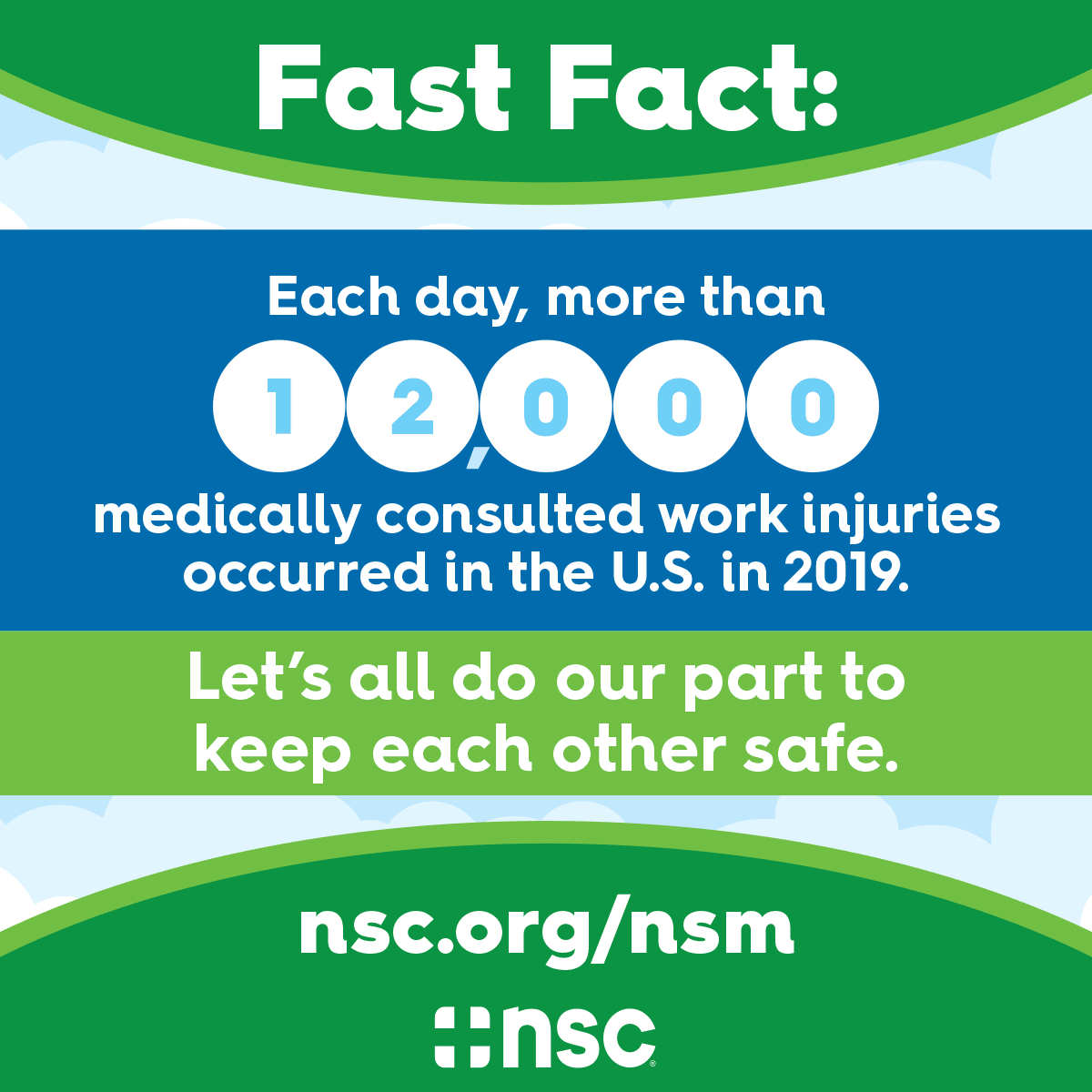
The NSC says:
Safety is all about continuous improvement. Whether organizationally or individually, NSC can help provide guidance for your path forward.
Week Four is dedicated to advancing your safety journey, ensuring that you’re continuously improving. This can take two forms: getting better at the positive things you’re already doing, and turning your attention to areas where there is still major progress to be made.
Positive aspects of safety management in schools can often be improved by rounding out the list of methods you’re using — have you covered all these bases?
- Display CAP alerts from local and national sources.
- Showing custom emergency alerts.
- Show How-to videos and exit maps.
- Multimedia outreach.
- Teacher-specific safety tips.
- Security personnel spotlights.
- Nutrition tips for better health.
Many schools are strong in one area, but come to rely on it too much at the expense of others: they might use out-of-date messaging or neglect channels of contact between school management, teachers, parents and students.
These types of messaging are most effective when they’re integrated and spread from a single dashboard, which is why we built Rise Vision to work that way.
Photo by Featured Image Source


